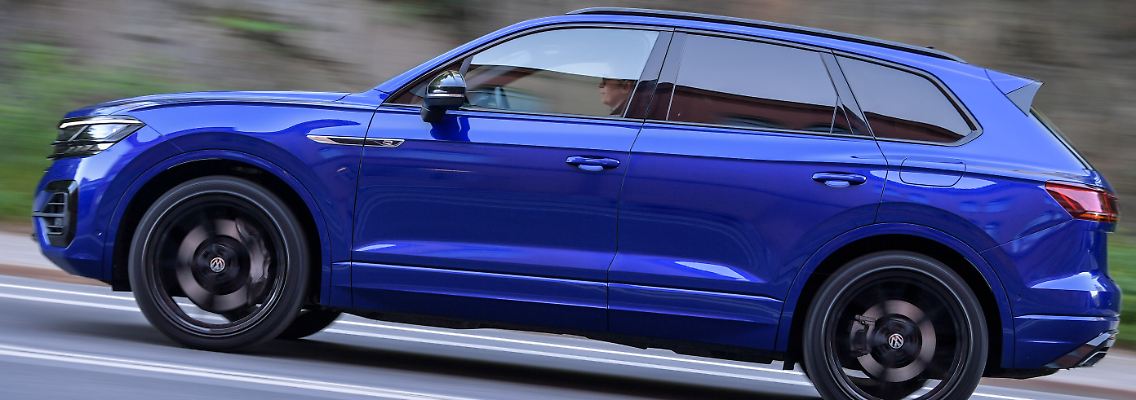Used car check: VW Touran - the edition makes the difference at the TÜV

Versatile vans like the VW Touran are often very popular with families – how does its stock fare as a used car?
(Photo: Volkswagen AG/dpa-tmn)
The VW Touran has been around for more than 20 years. It's one of those cars often called "space miracles"—and rightly so. It offers plenty of usable space. The TÜV test shows that older models are less reliable.
It can carry a lot of cargo, making it a family car, optionally with seven seats. It handles DIY shopping with bags and slats just as well as transporting sports equipment. This makes the VW Touran a versatile car, whose van concept the manufacturer has retained in its second generation. But on the test bench, the different versions make a difference: The Touran I is more vulnerable than its successor, according to the "Auto Bild TÜV Report 2025."
Model history
Primarily as a competitor to the compact van Opel Zafira, which had already been introduced in 1999, VW launched the first Touran in 2003. The first model update took place in 2006, the second in 2010 - although this, at least externally, was almost like a generational change.
In 2015, the official Touran II replaced the first. This was completely redesigned based on Volkswagen's Modular Transverse Matrix (MQB) and thus incorporated much of the technology from the Golf VII. The vehicle is a good 13 centimeters longer and also slightly wider, and offers more complex assistance systems than its predecessor, including adaptive cruise control and a post-collision brake.
Body and variants
The Touran I and Touran II are five-door models. In 2007, a version with higher ground clearance and plastic paneling, the Cross Touran, was launched. Also only the first Touran was available as a bivalent natural gas version with a small emergency gasoline tank (11 liters). The third row of seats (two seats), which can be folded down into the trunk floor, is an optional extra in both generations. When folded up, there's very little storage space.
Dimensions
- Touran I : 4.39 m to 4.41 m x 1.79 m to 1.80 m x 1.62 m to 1.68 m (L x W x H); trunk volume: 592 to 1989 l
- Touran II : 4.53 m x 1.83 m x 1.67 m (L x W x H); trunk volume: 834 to 1980 l
Strengthen
The Touran is one of those cars that is often somewhat exaggeratedly called a space miracle. But it's true. Not only is the volume generous, but the space is also easy to use. The three second-row seats can be folded individually or removed completely. The second generation, in particular, performs well in the vehicle inspection (MV).
In the chassis section, there is "hardly any cause for complaint," according to the report. The Touran II's foot brake is almost never criticized. Both generations have "virtually flawless" brake lines and hoses.
Weaken
The first Touran often fails its fourth MOT due to defective axle suspension, and its springs and dampers are often worn out. The foot brake and parking brake are also considered unreliable, judging by the increased complaint rates.
After seven years or more, i.e., from the third MOT onward, increased wear on the brake discs becomes noticeable. This already affects the oldest models of the Touran II, which also exhibited problems with the low beams during its first mandatory inspection – just a blip.
Breakdown behavior
The ADAC also sees the curve rising with the second edition. While the first Touran still ranks low in the club's breakdown statistics (models first registered between 2003 and 2006) or performs mediocre (2007 to 2015), the ADAC records "high reliability" from 2016 to 2022.
According to the club, the Touran's main breakdown areas include: the exhaust gas recirculation (2011 to 2013), injection nozzles (2011, 2013), the starter battery (2003, 2005, 2006, 2015), the starter motor (2004 and 2005), the timing chain (2003) and, over the entire period from 2003 to 2012, the ignition lock.
engines
- Touran I : Petrol (TSI) (four-cylinder with front-wheel drive): 75 kW/102 hp to 125 kW/170 hp, twin-turbocharged TSI engines included in the range from 2006; Diesel (TDI) (four-cylinder with front-wheel drive): 66 kW/90 hp to 130 kW/177 hp; Natural gas versions: 80 kW/109 hp and 110 kW/150 hp (TSI).
- Touran II : Petrol (three- and four-cylinder with front-wheel drive): 81 kW/110 hp to 132 kW/180 hp; diesel (four-cylinder with front-wheel drive): 81 kW/110 hp to 140 kW/190 hp.
Dealer sales value according to the German Automobile Trust (DAT) with statistically expected kilometers - three price examples
- Touran 1.4 TSI Ecofuel Highline (6/2013); 110 kW/150 hp (four-cylinder natural gas version); 155,000 kilometers; €9,044
- Touran 1.0 TSI BMT/Start-Stop Trendline OPF (6/2019); 85 kW/116 hp (three-cylinder petrol engine); 87,000 kilometers; €16,723
- Touran 2.0 TDI BMT/Start-Stop Active (6/2022); 110 kW/150 hp (four-cylinder diesel); 58,000 kilometers; from €28,922
Source: ntv.de, abe/dpa
n-tv.de






